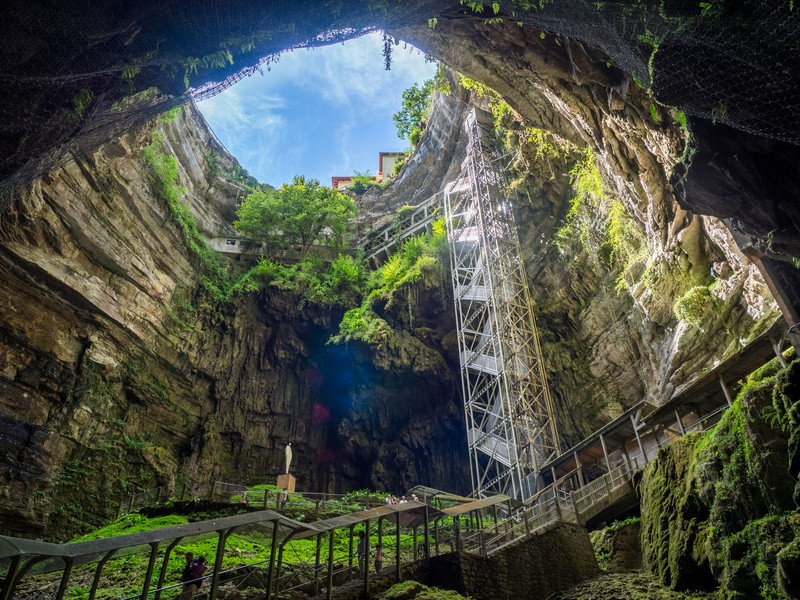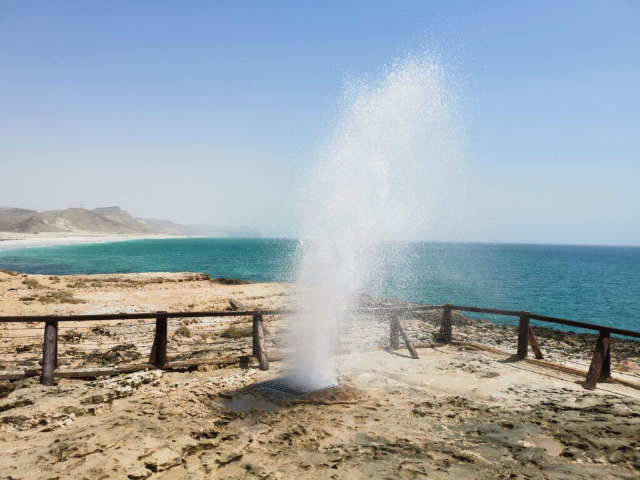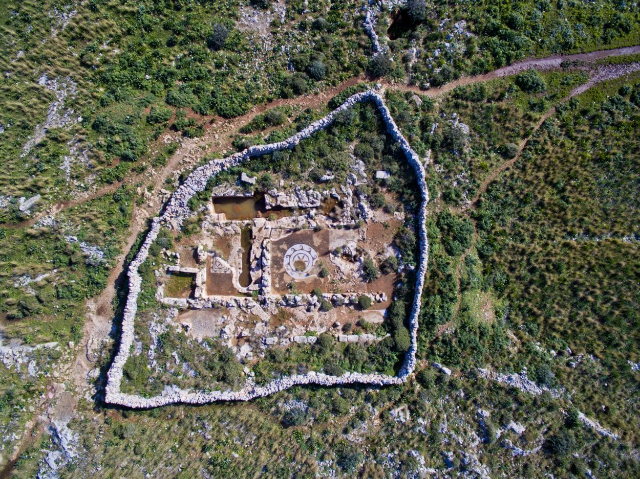We know how much popular legends have enriched the history of France. The Gouffre de Padirac is no exception in the lands of the old province of Quercy…
There is nothing more troubling than this hole in the surface of the earth, and there is nothing like it to let the imagination respond to this troubling enigma, to which people ascribed mystic powers and terrifying names: Devil? Treasure? The trace of a divine gesture? All those suppositions and more have been called forth.
The most well-rooted of them includes one that was told by a great many people in the Lot Department, the tale of flames emerging from the Gouffre to defend a treasure hidden by the English at the end of the Hundred Years’ War.
Another legend speaks of Lucifer who, in defiance of Saint Martin, is said to have created the Gouffre with a swipe of a talon. He asked the saint to cross the abyss in exchange for the souls of condemned peasants that he was getting ready to lead into Hell… a fateful exchange that pushed Saint Martin, guided by his faith, to spur on his mule to jump across the Gouffre! That tremendous leap , it is said, left the imprint of the animal’s hoof in the rock, still visible today.
Defeated and humbled, the Devil then disappeared forever into the depths of the Gouffre…
The Padirac Chasm (French: Gouffre de Padirac) is a cave 103 m (338 ft) deep, with a diameter of approximately 33 metres (108 ft). Visitors descend 75 m via a lift or a staircase before entering into the cave system. The cave contains a subterranean river system that is partly negotiable by boat, and it is regarded as “one of the most extraordinary natural phenomena of the Massif Central”.
The first tourists visited the cave on 1 November 1898; however, the site was officially opened for tourism on 10 April 1899 by Georges Leygues, the 87th prime minister of France (then called président du conseil). Today, although the chasm system is made up of more than 40 km (25 mi) of galleries, only 2 km have been opened for tourism.













